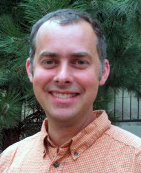'Rethinking MR: Collecting Information Instead of Images'
Date

Dr. Mark Griswold, PhD
Professor of Radiology
Director of MRI Research
Case Western Reserve University
Case Center for Imaging Research
Cleveland, Ohio
Rethinking MR: Collecting Information Instead of Images: With very few exceptions, all MR studies since the mid-1960s have used the same basic experimental formulation: a fixed "pulse sequence" generates an MR signal is repeated multiple times to encode spectral, spatial or decay information (or some combination of these quantities). One then applies a mathematical transform such as a Fourier transform (or similar) to obtain the results in "real" quantities, such as frequency or space. This framework of MR works so well that it has remained nearly constant for almost 50 years.
However, this framework is not without significant limitations. First and foremost, the majority of MR techniques are only qualitative. We can, for example, tell that the MR signal from one sample is larger or shifted in frequency compared to another sample and can then deduce information about the different materials using our prior knowledge. However, in general, great effort is required to achieve quantitative results in MR, even for single MR parameters. In addition, the basic framework requires serial application of different pulse sequences to acquire information about other remaining parameters, and thus limits the amount of information that can be collected in any one scan period.
In this talk we will discuss a new framework, Magnetic Resonance Fingerprinting (MRF), that we believe has the potential to overcome these limitations and open up numerous new possibilities for MR. MRF is based on a different concept for MR acquisition, processing and visualization. Instead of using a single "purified" pulse sequence, MRF uses a pseudorandomized pulse sequence which is simultaneously sensitive to multiple parameters during a single acquisition. This provides a rich signal but one that no longer fits into the standard MR processing framework. Following the acquisition of this largely incoherent signal, MRF uses pattern recognition to decode the acquired data. As we demonstrate, MRF is able to recover high quality quantitative results for multiple MR parameters simultaneously from a single acquisition. The pattern recognition used in MRF also provides a high level of suppression of measurement errors stemming from patient motion, measurement noise and undersampling and in certain cases may provide higher sensitivity than traditional MR methods. MRF is also able to directly generate maps specific to individual tissue types, which allows for the characterization of specific tissues when they only occupy a fraction of a pixel, which should allow for earlier disease detection. Finally, MRF should practically simplify the clinical MR workflow, with the potential that the end user could just be presented with a single
Please note that Dr. Mark Griswold is an applicant for the VA CIND Director Faculty Position.
Type
Time Duration

Dr. Mark Griswold, PhD
Professor of Radiology
Director of MRI Research
Case Western Reserve University
Case Center for Imaging Research
Cleveland, Ohio
Rethinking MR: Collecting Information Instead of Images: With very few exceptions, all MR studies since the mid-1960s have used the same basic experimental formulation: a fixed "pulse sequence" generates an MR signal is repeated multiple times to encode spectral, spatial or decay information (or some combination of these quantities). One then applies a mathematical transform such as a Fourier transform (or similar) to obtain the results in "real" quantities, such as frequency or space. This framework of MR works so well that it has remained nearly constant for almost 50 years.
However, this framework is not without significant limitations. First and foremost, the majority of MR techniques are only qualitative. We can, for example, tell that the MR signal from one sample is larger or shifted in frequency compared to another sample and can then deduce information about the different materials using our prior knowledge. However, in general, great effort is required to achieve quantitative results in MR, even for single MR parameters. In addition, the basic framework requires serial application of different pulse sequences to acquire information about other remaining parameters, and thus limits the amount of information that can be collected in any one scan period.
In this talk we will discuss a new framework, Magnetic Resonance Fingerprinting (MRF), that we believe has the potential to overcome these limitations and open up numerous new possibilities for MR. MRF is based on a different concept for MR acquisition, processing and visualization. Instead of using a single "purified" pulse sequence, MRF uses a pseudorandomized pulse sequence which is simultaneously sensitive to multiple parameters during a single acquisition. This provides a rich signal but one that no longer fits into the standard MR processing framework. Following the acquisition of this largely incoherent signal, MRF uses pattern recognition to decode the acquired data. As we demonstrate, MRF is able to recover high quality quantitative results for multiple MR parameters simultaneously from a single acquisition. The pattern recognition used in MRF also provides a high level of suppression of measurement errors stemming from patient motion, measurement noise and undersampling and in certain cases may provide higher sensitivity than traditional MR methods. MRF is also able to directly generate maps specific to individual tissue types, which allows for the characterization of specific tissues when they only occupy a fraction of a pixel, which should allow for earlier disease detection. Finally, MRF should practically simplify the clinical MR workflow, with the potential that the end user could just be presented with a single
Please note that Dr. Mark Griswold is an applicant for the VA CIND Director Faculty Position.
